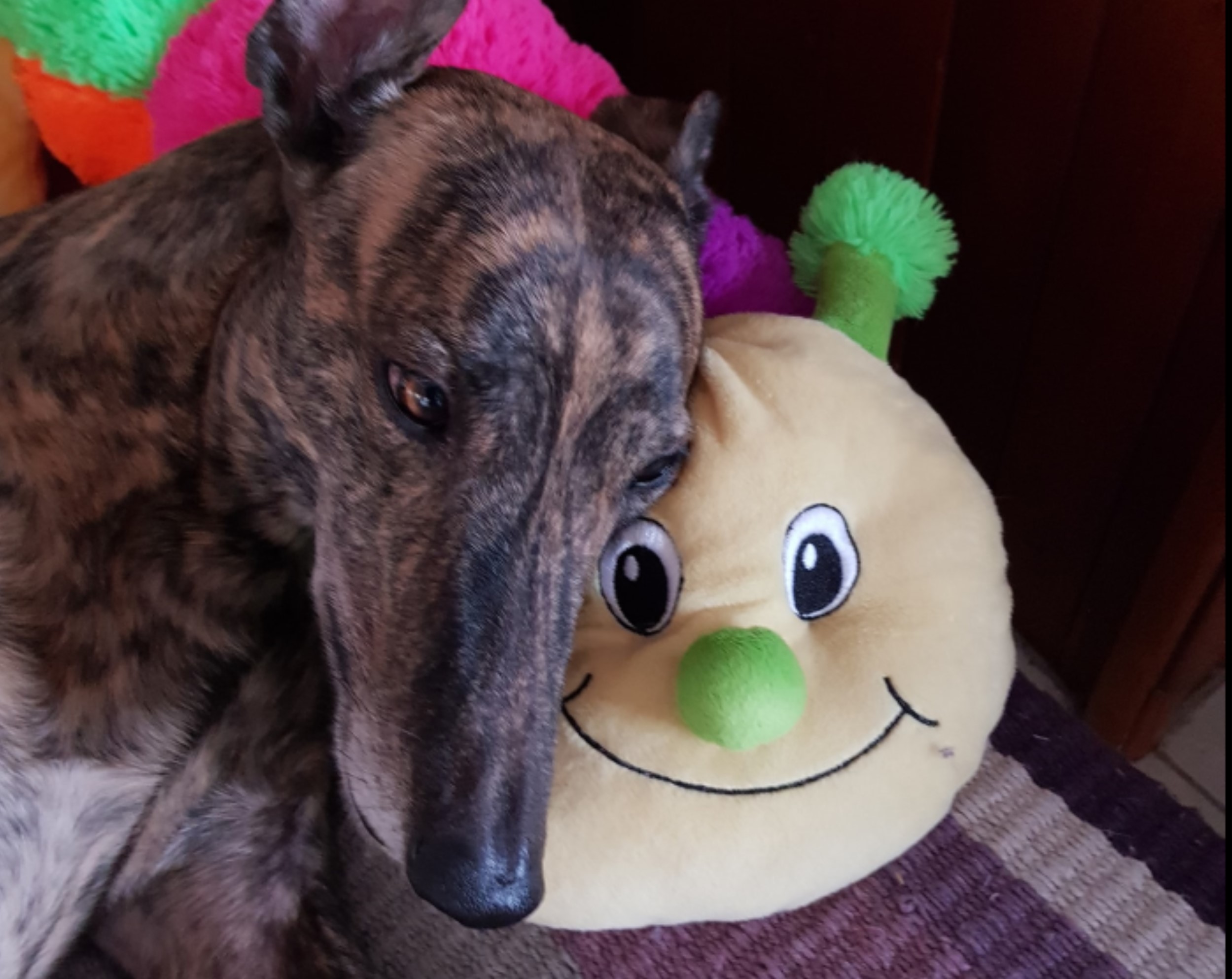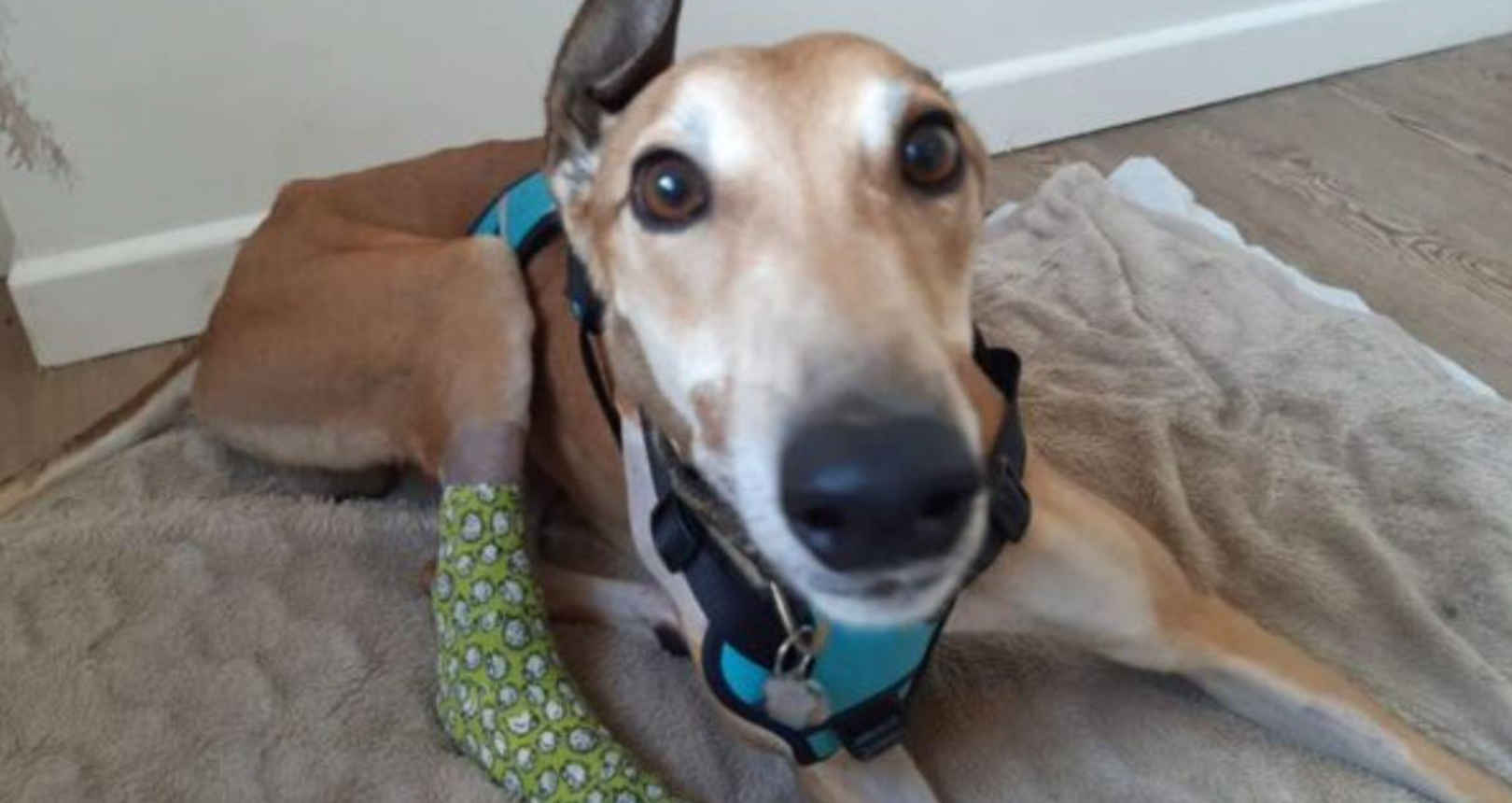(Image shows greyhound dumped at community rescue with an untreated broken leg receiving care – image provided by rescue group)
by Marnie Hill, CPG volunteer
A recent report by the Coalition for the Protection of Greyhounds (CPG) sheds light on the stark reality of greyhound rehoming in Australia.
While the racing industry sings the praises of its Greyhound Adoption Programs (GAPs), the latest edition of the GAPing hole report for 2021-22 tells a different story.
Key findings: the reality of greyhound rehoming
In its third annual update, the report unmasks misrepresentations of the racing industry’s rehoming efforts through manipulated statistics and polished marketing. The report also reveals insufficient regulation and enforcement of greyhound rehoming across Australia. It further exposes unsettling animal welfare practices behind the industry’s rehoming façade.
Distorted figures: the dark side of counting canines
In distorted figures, CPG found deliberate inflation of statistics in the industry’s self-reported data. One method involves claiming credit for rehoming by others through reimbursement for adoption preparation, such as de-sexing and dental care.
Another way the industry fudges the numbers is by counting greyhounds held by industry participants, such as trainers and owners, who can keep dogs caged for up to 23 hours a day. While labelled as rehomed, these greyhounds can endure a lifetime of confinement.

Misleading media: deception by smoke and mirrors
CPG’s report reveals a game of public deception. With budgets in the millions, GAPs funnel a significant portion – around 30% – into elaborate marketing rather than rehoming efforts. This intentional misallocation of funds to glossy PR campaigns distorts the industry’s real rehoming performance, creating a false public perception.
Sordid subsidies: the real financial landscape
The report is also critical of governments subsidising the greyhound racing industry in a questionable and mutually enriching relationship. While public support for greyhound racing wanes, the industry benefits from substantial taxpayer money. The subsidies prop up the unpopular and declining industry while failing to address the issues of responsible rehoming.
Reject and euthanise: the industry’s cruel and lethal practices
Rather than taking in every needy dog, GAPs frequently reject injured or unsocialised greyhounds to avoid rehabilitation costs. This leaves vulnerable greyhounds out in the cold and reliant on community rescue groups for a chance at a new life.
Getting into a GAP has no promise of getting out alive. Many greyhounds accepted by GAPs end up facing their demise, with some GAPs euthanising one in ten dogs. In contrast, community rescuers rarely euthanise greyhounds and only in cases of terminal illness.
Overbreeding hits overdrive: the crisis escalates
CPG predicts the crisis in greyhound rehoming will balloon because of a sudden increase in overbreeding. With a jump since the last report from 12,000 to over 14,000 greyhounds bred annually, the industry is now breeding six times more dogs it can responsibly rehome.
To deal with its excess dog problem, the industry frequently engages in what welfare groups call ‘disappearing’ greyhounds. Those who escape mass killings are often offloaded to questionable third parties, ending up abused, abandoned or used as bait dogs in fighting rings.
The RSPCA cautions against third-party adoptions due to the lack of transparency and recommends verifying and following up on such arrangements. Currently, none of the state racing bodies release detailed data that would reveal the true nature of third-party adoptions.

Community vs. industry: who's leading the charge?
Despite being massively outspent, community groups rehomed more greyhounds than GAPs in multiple states. In Victoria, community rescuers rehomed twice as many greyhounds as GAP VIC, while GAP NSW rehomed ony 301 dogs with a budget of $6.4M. These numbers raise questions about the industry’s sincerity in finding homes for its former racers.
Regulatory gaps: the void in oversight
Regarding regulations, CPG flags enormous gaps in rehoming requirements, monitoring for compliance, and consequences for non-compliance in most jurisdictions. Queensland is the worst offender, having no rehoming policies. This has resulted in the death and suffering of countless greyhounds, with nearly 800 being used for lab experiments or blood banking.
Forging responsibility: a blueprint for accountability
The GAPing Hole Report underscores the need for stronger regulations, whole-of-life tracking (which currently exist nowhere in Australia) and data transparency as key recommendations. It also outlines a blueprint for a more ethical and responsible rehoming landscape, from breeding limits to creating independent regulators which prioritise greyhound welfare.
Conclusion: a call for change
The report serves as a wake-up call about the urgent need for reforms in greyhound rehoming. Community efforts, though commendable, are strained. Achieving meaningful change requires genuine effort from racing industry stakeholders and governments to bridge the gap between rhetoric and reality.
